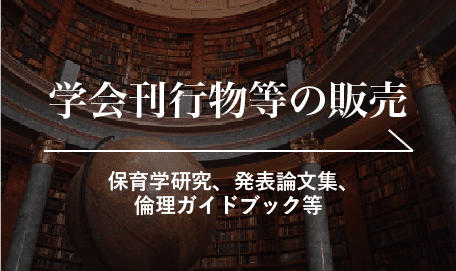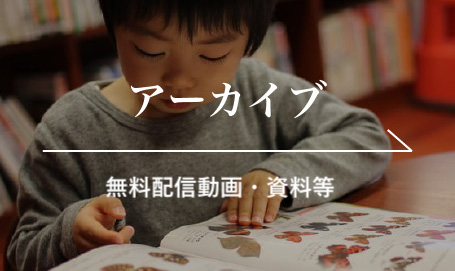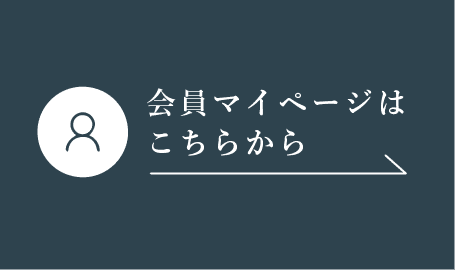Author(s): Ayumi Ohno.
Title: A Study on Transformation of Evaluation of the Early Childhood Education and Care in Sweden: Focus on the Pedagogical Documentation Introduced after the Education Reform in 2011
Research on Early Childhood Care and Education in Japan, 2014, 52(2), 6-17.
Abstract: The purpose of this paper is to examine features of the evaluation for preschool activities introduced after the educational reform in 2011 in Sweden that built the lifelong learning system. As a method, it focused on the “pedagogical documentation”, and analyzed the feature from examination of previous studies. Moreover, the correspondence to introduction of the new evaluation method in the preschool was considered based on the field survey. As a result, it was understood that the “pedagogical documentation” is the unique practice developed based on research of the early childhood education study of Sweden. It became clear that the “pedagogical documentation” is composed from a viewpoint which observes two learning processes: a child’s learning and a preschool teacher’s learning.
Keywords: evaluation,documentation,preschool activities,Sweden,education reform
—————–
Author(s): Mayumi Sawada.
Title: Reexamination of Practice of the Branch Site of Kindergarten Attached to the Tokyo Women’s Teachers College: Focusing on Their Subjects of the Handcraft and the Play
Research on Early Childhood Care and Education in Japan, 2014, 52(2), 18-27.
Abstract: The previous research teaches us that the Kindergarten attached to the Tokyo Women’s Teachers College lead the Japanese early childhood education in the Meiji Era, but in this context, the kindergarten means the Main Site, and the Branch Site has not been examined its connection with the Main. The Branch was regarded as a contrastive existence to the Main; it provided a model style for the kindergartens for the poor. This study tried to examine the methods of the Branch focusing on their subjects of the handcraft and the play, and found out that its curriculum contents affected the establishment of a policy document, the “Regulation for Early Childhood Care, Education and Facilities of Kindergarten.” Also, it becomes clear that the Branch played an important part in making a model of popular kindergarten in Meiji Era.
Keywords: the branch site of kindergarten attached to the tokyo women’s teachers college,method of the handcraft and the play,comparison with the main site,regulation for early childhood care, education and facilities of kindergarten
—————–
Author(s): Moe Okuwa.
Title: The Role of Imitation in Peer Relationships among 0-2 Year Olds
Research on Early Childhood Care and Education in Japan, 2014, 52(2), 28-38.
Abstract: This study observed peer relationships among 0- to 2-year olds with a focus on children’s imitation. The findings made it possible to classify the functions of imitation into three categories: (T) children learn social skills by imitation, c children plan the construction and maintenance of peer relationships by imitation, and (3) children convey their own feelings by imitating others’ expressions. Through these functions, children learn, communicate, and live a rich social life. Imitation performed several functions in various situations and was shown to promote the mental and physical growth of children. The study revealed the capacity of imitation to allow children to express themselves well.
Keywords: imitation,peer relationships,0-2 year olds,participant observation,function of imitation
—————–
Author(s): Mariko Miyata.
Title: An Analysis of Three-Year-Old Children’s Block Play Scene: Focusing on Action and Response when Pulling Down Blocks
Research on Early Childhood Care and Education in Japan, 2014, 52(2), 39-52.
Abstract: This study considers affirmative reactions infants take in pulling down blocks when they (3 year old children) play building blocks at kindergartens, which picks up two considerations, (1) What kind of pulling down do they show positive reactions for? (2) How do environmental changes that physically come from pulling downs affect the interactions between them? The result of the analysis showed that infants reacted affirmatively for pulling down blocks when they did not have any particular reasons for building blocks and solid goals were missing. On the other hand, when the builders’ goals were to conform to their friends for building blocks, the reactions followed their friends’ goals. Further more, as differences of the builders’ goals are made clear by the conduct of pulling down blocks, it is indicated that the builders with some goals promote working on others for the interactions.
Keywords: block,three-year-old children,pulling down block,goal
—————–
Author(s): Machiko Tsujitani.
Title: How 4-Year-Old Kindergarten Children Represent Norms to Others: Focusing on Reasons and Relationships
Research on Early Childhood Care and Education in Japan, 2014, 52(2), 53-65.
Abstract: This study observed how children represent norms to others in kindergarten, and analyzed how they come to understand the importance of norms. Thirty-five 4-year-old children were observed for 6 months and observation notes were analyzed according to 1) the reasons children gave when representing norms, and 2) whom the norm protected. The results showed that 1) the children gave reasons based not only on their own wishes and assertions but also on their consciousness of others, and 2) the shared norms in kindergarten were often represented without reasons. These results indicate that children do not need to give reasons for shared norms or have not yet noticed the reasons for such norms. In conclusion, teachers should help children understand the importance of and reasons for norms in relation to others.
Keywords: norm,reason,relation,kindergarten
—————–
Author(s): Noriko Fujino.
Title: The Process of Change of the Mother and Family who have an Autistic Child of Infancy
Research on Early Childhood Care and Education in Japan, 2014, 52(2), 66-75.
Abstract: The purpose of the study was to clarify how a mother of an autistic child would feel when she became skeptical that her child might have a disability, how her family members changed accordingly, and what the factor affecting their change is. Semi-structured interviews were conducted with 5 mothers whose children had autism. Qualitative data was analyzed using Modified Grounded Theory Approach. Results showed that mothers’ feelings have changed to “a sense of unity with the child” and it was clear that the family with an autistic child became much more cooperative in terms of the partnership. The change of the mother and family influenced it cyclically, and, the results suggested that one of the contributing factors for their changes was the social connectedness in a community.
Keywords: autism,family,mother,change,social connectedness others
—————–
Author(s): Eiji Honma.
Title: The Current Condition of the Relationships between Caregivers and Children: Through the Awareness Survey to Caregivers in city A
Research on Early Childhood Care and Education in Japan, 2014, 52(2), 76-87.
Abstract: While the childcare system is changing, and the needs for childcare is diversified, how are relationships between caregivers and children changing? A quantitative survey was conducted with nursery schools to find out the current conditions and changes of relationships between caregivers and children in city A. As a result, it was found out that many caregivers felt no room for daily activities, deterioration of care settings, and worry about children’s safety. The ways of interacting between caregivers and children had not changed much. Frequency and time duration of interaction had not decreased. However, caregivers tend to take positions where they can survey all children while conducting activities. From this study, it became clear that ‘prescribed number of children per setting’, ‘subjective size’, and ‘working conditions’ affect caregivers’ evaluation of childcare settings.
Keywords: quality of child care,relationships between caregivers and children,evaluation of childcare settings,nursery school survey
—————–
Author(s): Harutomo Ueda.
Title: How Does Novice Teacher, Satomi Acquired “I got it” Belief in the Day Care Center?: Focus on Teacher’s Belief and Teaching Styles
Research on Early Childhood Care and Education in Japan, 2014, 52(2), 88-98.
Abstract: This study investigated how to translate the process of a novice teacher’s belief using Three Layers Model of Genesis (TLMG) by Valsiner. The researcher interviewed Satomi (female, a novice teacher in a daycare) for 1 hour every month from June 2012 to March 2013. The resulting narrative data was collected and analyzed through Steps for Coding and Theorization (SCAT) and Trajectory Equifinality Model (TEM) qualitative methods. The study found translated process that Satomi got ‘I got it’ belief from confusion period to trial and error period.
Keywords: teaching styles,troubles,novice teachers,Steps for Coding and Theorization (SCAT),Trajectory Equifinality Model (TEM)
—————–
Author(s): Kazuyuki Sato, Michiko Kumano, Mari Kashiwa, Yukitane Tanaka.
Title: How Caregivers’ Work-Life Balance Influences the Evaluation of Childcare
Research on Early Childhood Care and Education in Japan, 2014, 52(2), 99-110.
Abstract: This study clarifies caregivers’ awareness of work-life balance and its reality. We examined the relationship between the awareness of work-life balance and the evaluation of childcare. First, we found a relationship between the caregivers’ view of gender roles and their perception of work-life balance. Second, caregivers focused on their work life, which was different from their ideal life, resulting in a discrepancy between their ideal and their real lives. Finally, work-life balance of caregivers is related to their evaluation of childcare. Caregivers whose evaluation of childcare was high also had a high level of satisfaction with respect to work-life balance and tended to be actively involved in childcare. A healthy work-life balance for caregivers will help ensure the childcare quality.
Keywords: work-life balance,view of gender role,caregiver,evaluation of childcare
—————–
Author(s): Junko Niiyama, Osamu Nishiyama.
Title: Practice of Improvisational Expression and Characteristics of Learning in Training Childcare Professionals
Research on Early Childhood Care and Education in Japan, 2014, 52(2), 111-123.
Abstract: This paper clarifies how improvisational expression practices are conducted in body expression classes for training childcare professionals, as well as the characteristics of learning among students in those classes. Specifically, this paper also evaluates student introspection through quantitative and qualitative analysis. When analyzing the students’ activities, the results confirm that “sensory activities,” “activities arising from a relationship,” cognitive activities,” and “activities of understanding and judgment” are at the core of the “primary activities of body expression” (i.e., moving, making, and seeing). The results also confirm that the contents of those activities varied from the students’ physical feeling of the body and movement to their innovation of expression. It is also found out that those contents were deepened through the student’s relationship with his or her peer.
Keywords: training childcare professionals,body expression,improvisational expression,practice,characteristics of learning
—————–
Author(s): The Significance of Developing the Relationships between Mothers and Kindergarten Teachers after Her Children’s Entrance.
Title: Asami Imai
Research on Early Childhood Care and Education in Japan, 2014, 52(2), 124-134.
Abstract: The purposes of this study are following two points. First, it describes developing the relationships between kindergarten teachers and mothers after children’s entrance to kindergarten. Second, this paper discovers what the relationships mean for the process of mothering. This study analyzes 18 mother’s narratives with Modified Grounded Theory Approach. The result of analysis shows mothers can recognize the significance of kindergarten teachers as well as importance of themselves in developing the relationships with teachers. In this process, mothers face the turning point for mothering.
Keywords: experience of mother after child’s entry to kindergarten program,relationship between mother and kindergarten teacher,mothering
—————–
Author(s): Shin Sugimoto, Mariko Namiki.
Title: Relationship among Inhibition and Evaluation of Mother’s Anger toward Children, Parental Metacognition, and Parenting Self-Efficacy in the Rearing of Young Children
Research on Early Childhood Care and Education in Japan, 2014, 52(2), 135-149.
Abstract: The purpose of this study was to investigate the relationship among inhibition and evaluation of mother’s anger toward children, parental metacognition, and parenting self-efficacy in the rearing of young children. One hundred forty-nine mothers of 4- to 5-year old children answered the questionnaires, which covered the following four points: inhibition of anger, evaluation of anger, parental reflection in the rearing of young children, and parenting self-efficacy. As a result, the following two points were found. At first, scores on the ‘negative self-conscious feeling about anger’ measure were significantly and positively related to scores on the ‘reflection on themselves through other people’ measure. Secondly, scores on the ‘sense of burden measure were significantly and negatively related to scores on the ‘parenting self-efficacy’ measure.
Keywords: inhibition and evaluation of mother’s anger,parental metacognition in the rearing of young children,parenting self-efficacy
—————–
Author(s): Hung, Fu-Tsai.
Title: Current Conditions of Early Childhood Care and Education in Taiwan: Transformation from Formal Integration to Substantial Integration of the Two Systems
Research on Early Childhood Care and Education in Japan, 2014, 52(2), 150-164.
Abstract: In 2012, Taiwan implemented the “Early Childhood Education and Care Act,” which was the official implementation of the policy of integrating kindergartens and preschools. It has caused great changes in early childhood education in Taiwan. This article aims to analyze the profile of the early childhood education system before and after the implementation of the integration policy. Components such as institutional development, the number of agencies and recruits, as well as teacher education and the curriculum of early childhood education are included in the profile. Secondly, the current five challenges for early childhood education in Taiwan are presented, including descriptions of the status of each challenge and viable coping methods.
Keywords: preschool,Taiwan,early childhood education,Early Childhood Education and Care Act
—————–









